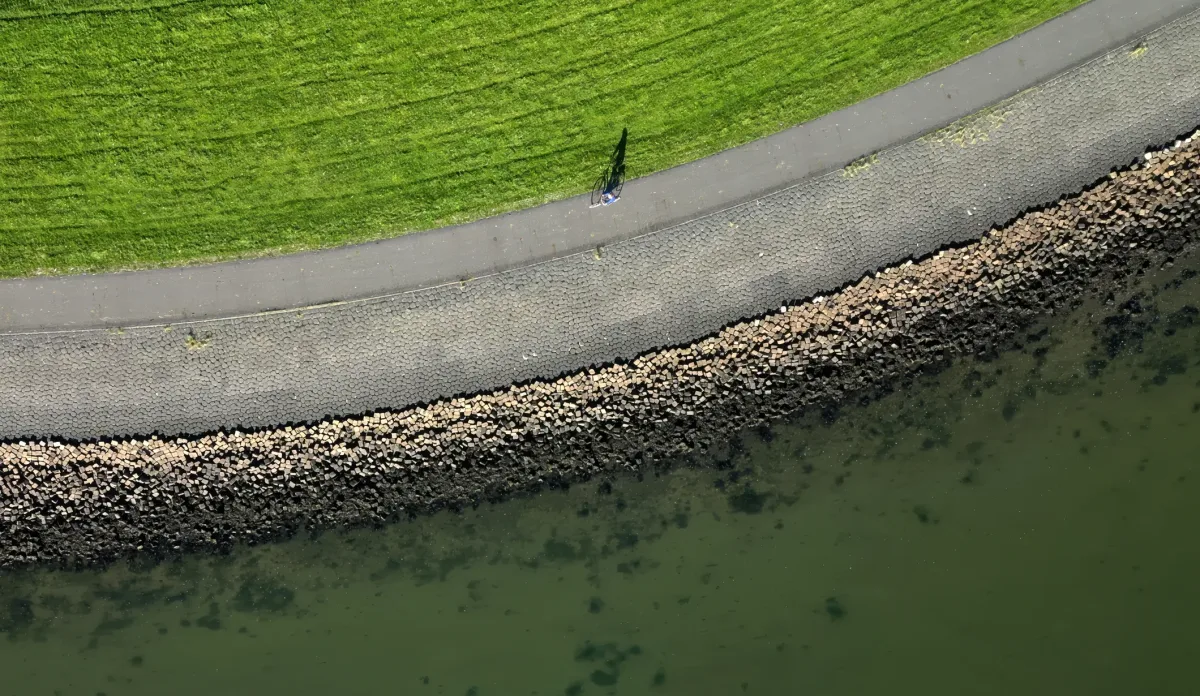The bill for natural disasters grows steeper each year. In 2024, the United States endured 27 billion-dollar disasters costing a total of 182.7 billion US dollars—the fourth-costliest year on record.
Globally, when cascading effects and ecosystem damage are factored in, disasters now cost 2.3 trillion US dollars annually. The frequency of catastrophe has accelerated too: the average time between billion-dollar disasters in America has plummeted from 82 days in the 1980s to 19 days over the past decade. Resources are strained. Responses are overwhelmed.
The planet, it seems, is moving faster than governments can react.
The private sector has confronted similar pressures for years. Market disruptions arrive with increasing velocity; customer expectations shift overnight; technological upheaval renders yesterday’s certainties obsolete. Businesses that survive—and thrive—do so by embracing what consultants call “total enterprise reinvention”: continuous transformation, rapid response times, organisational agility, and the ability to mobilise everyone towards a common purpose.
The principles sound strikingly applicable to disaster management. The question is whether states, with their often Byzantine bureaucracies and political inertia, can learn the lesson.
Holding back the sea
Take the Dutch. More than half of the Netherlands sits below sea level, making flood management an existential imperative. After a devastating 1953 storm surge killed over 1,800 people, the country embarked on the Delta Works—a generational project involving storm barriers, dykes, and an entirely reimagined relationship with water. But unlike many governments, the Dutch did not simply build and declare victory. They institutionalised continuous adaptation.
The Dutch Flood Protection Programme now aims to strengthen 1,500 kilometres of dykes by 2050, constantly updating standards as climate models evolve and incorporating nature-based solutions alongside traditional engineering. The approach mirrors corporate reinvention principles: treat change as the default state, build a robust ‘digital core’ (or in this case, adaptive infrastructure), and never assume the job is finished.
The Netherlands has effectively turned disaster prevention into an organisational capability. Its system embraces external sensing—vigilantly scanning for threats and opportunities. Water authorities test flood defences every five years against increasingly strict safety norms. The country invests heavily in predictive modelling, planning for sea-level rises of up to five metres by 2200.
Regional water boards operate with considerable autonomy but coordinate through centralised frameworks—a balance between distributed decision-making and strategic alignment that any business undergoing reinvention would recognise. The Dutch have learned that preventing disaster requires the same forward-thinking agility that prevents corporate obsolescence.
When the levee breaks
Now consider the counterexample: Hurricane Katrina. When the storm struck New Orleans in 2005, the response was characterised by every sin that business reinvention seeks to eliminate.
Rigid hierarchies prevented rapid decision-making. Unclear lines of authority created confusion. The Federal Emergency Management Agency (FEMA) took days to deliver water and medical supplies to survivors at the Superdome. Twenty-nine different federal agencies shared responsibility for disaster relief, with 15 cross-agency ‘Emergency Support Functions’ adding layers of coordination complexity.
FEMA turned away doctors volunteering at emergency facilities, blocked truckloads of water from Walmart, and prevented the Coast Guard from delivering diesel fuel. One Louisiana official memorably complained that whilst the state wanted “helicopters, food and water,” federal agencies “wanted to negotiate an organisational chart.”
The contrast reveals what happens when bureaucracies fail to embrace agility. Businesses undergoing reinvention prioritise speed over structure, outcomes over process, and cross-functional collaboration over territorial fiefdoms. They eliminate silos, empower frontline decision-makers, and ruthlessly cut red tape. States facing disasters ought to do the same, yet rarely do.
After Katrina, Congress did reform FEMA—requiring disaster expertise for its leadership and granting authority to pre-position resources before disasters strike. These changes helped during Hurricane Sandy in 2012. But such reforms remain fragile, vulnerable to political winds and budget cuts. Businesses cannot afford such complacency; markets punish those who slip. Governments, insulated from immediate competitive pressure, too often revert to form.
The reinvention playbook
The business reinvention playbook offers several principles that apply directly to disaster management. First, organisations must cultivate strategic agility—the ability to sense threats early and pivot resources rapidly. The average cost per kilometre of Dutch flood defences rose to 18 million euros before efficiency programmes brought it down. Continuous improvement, not heroic one-off efforts, generates sustainable results.
Second, successful reinvention requires breaking down organisational barriers. Hurricane Katrina’s failures stemmed partly from federal, state, and local agencies working at cross-purposes. Business reinvention emphasises market-oriented ecosystems—small, autonomous teams connected through shared purpose and information flows. Disaster response needs something similar: clearly defined roles, pre-established coordination mechanisms, and the authority to act without waiting for bureaucratic approval.
Third, reinvention thrives on data-driven decision-making. Companies invest heavily in analytics, real-time dashboards, and predictive modelling. The Netherlands employs sophisticated flood risk mapping that projects vulnerabilities through 2150, informing both urban planning and agricultural adaptation. Contrast this with American disaster response, where 50 per cent of businesses lack adequate emergency preparedness plans and governments frequently respond to disasters without comprehensive understanding of infrastructure interdependencies. The information exists; the political will to act on it often does not.
Fourth, business reinvention emphasises prevention over reaction. It is cheaper to avoid obsolescence than to recover from bankruptcy. Similarly, every dollar spent on disaster risk reduction generates substantial returns, yet most government spending flows towards emergency response rather than mitigation.
The UN’s Global Assessment Report warns that vulnerable countries remain trapped in cycles of “disaster, response and recovery,” only to repeat the pattern. This reactive approach mirrors companies that lurch from crisis to crisis rather than investing in strategic transformation. The Dutch, by contrast, treat flood prevention as continuous reinvention—an ongoing investment that adapts to changing conditions rather than a series of desperate post-disaster patches.
Finally, getting everyone aligned matters. Business reinvention fails when leadership commits but middle management resists, or when departments pursue conflicting objectives. Disaster response suffers similar fractures. After Katrina, local officials blamed federal red tape whilst federal officials pointed to inadequate state requests. Such finger-pointing would be intolerable in a struggling company facing existential threat. Successful reinvention—corporate or governmental—requires shared purpose, transparent communication, and accountability structures that incentivise collaboration rather than buck-passing.
Why governments resist
The obstacles to applying these principles are obvious. Businesses face existential pressure; governments do not, at least not immediately. Markets punish failure swiftly; voters punish incompetence episodically, if at all. Corporate leaders can make bold decisions and weather short-term losses if the strategy eventually succeeds. Politicians operate on electoral cycles, discouraging investments whose benefits materialise beyond the next campaign. Businesses can hire and fire; civil service protections make personnel changes glacial.
These structural differences explain why governments struggle to match corporate agility.
Yet the growing cost and frequency of disasters may finally concentrate minds. When one in four businesses permanently close after major disasters, economic pressures mount. When Hurricane Helene alone causes $56 billion in damage and kills 243 people, political consequences follow. The incentives are shifting, slowly but perceptibly.
Learning to pivot
What, then, should governments do? They should embrace continuous reinvention as the Dutch have—treating disaster preparedness not as a project with an end date but as an ongoing capability. They should streamline coordination mechanisms, eliminating redundant agencies and clarifying authority. Pre-positioning resources, establishing standing contracts with private suppliers, and conducting regular stress tests would help. Above all, they should shift spending from post-disaster recovery towards pre-disaster mitigation. Prevention is unglamorous. There are no ribbon-cutting ceremonies for floods that never happen, no photo opportunities for hurricanes that cause minimal damage because infrastructure proved resilient.
But business leaders learnt long ago that preventing obsolescence beats recovering from bankruptcy. Governments, facing accelerating climate disruption, must learn the same lesson.
The private sector proves it can be done. Companies facing disruption either transform or perish. Those that survive do so by moving fast, breaking silos, empowering teams, and treating change as permanent. States have structural disadvantages—political constraints, bureaucratic inertia, conflicting mandates—but also unique advantages: patient capital, regulatory authority, and the legitimacy to coordinate collective action. The Dutch demonstrate that governments can, when sufficiently motivated, institutionalise agility and forward-thinking adaptation.
The alternative grows bleaker each year. Disasters will arrive with increasing frequency and ferocity. The average time between catastrophes will continue shrinking. Governments can either embrace the principles of continuous reinvention or watch recovery costs soar whilst their citizens suffer preventable losses. Business has already made its choice, adapting or dying in Darwinian fashion.
Governments, enjoying no such luxury of failure, must now decide whether to learn from the private sector’s painful lessons—or repeat the same mistakes at ever-greater scale—and cost. The flood is coming. The only question is whether governments will prove nimble enough to meet it.
Photo: Dreamstime.







